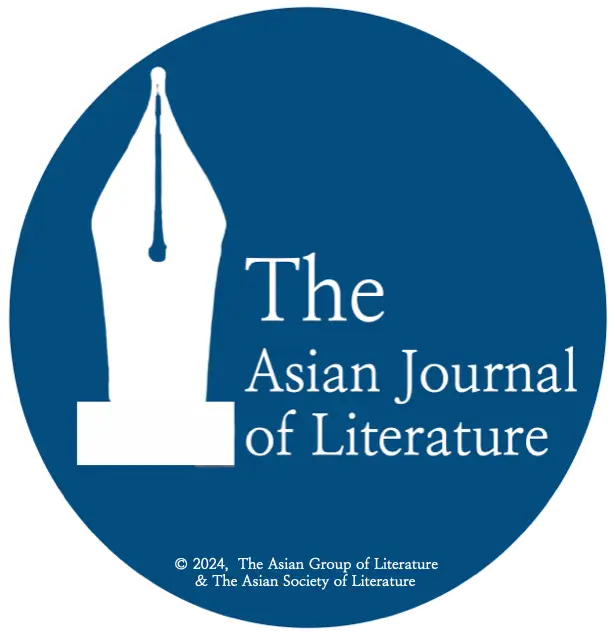By Rupasinghe P.D, Abiem R T, Dickwella D.N
Abstract
This paper examines how successive conflicts in Sudan and South Sudan have transformed the understanding of "home" among South Sudanese populations. Through analysis of empirical data from colonial, post-colonial, and post-independence periods, this research investigates the psychological, social, and cultural dimensions of displacement and identity formation. The findings suggest that repeated displacement has led to complex, multi-layered conceptualisations of home that simultaneously draw on ancestral connections, lived experiences, and aspirations for security. The research argues that contemporary peace-building and reconciliation efforts must acknowledge these nuanced understandings of home and belonging to achieve sustainable solutions.
1. Introduction
The Republic of South Sudan gained independence in 2011 after decades of civil war with Sudan, becoming the world's newest nation. However, this independence came after generations of conflict that profoundly affected populations across the region. This paper investigates how these successive conflicts have shaped and reshaped South Sudanese people's understanding of "home"—a concept that encompasses physical place, social connections, cultural identity, and psychological belonging. The question of home is particularly salient in South Sudan, where approximately one-third of the population has experienced forced displacement (UNHCR, 2023). Understanding how these populations conceptualise home is crucial not only for theoretical analysis but also for practical considerations in refugee resettlement, peacebuilding, and national identity formation.
This research addresses three primary questions:
- How have colonial and post-colonial conflicts influenced South Sudanese conceptions of home?
- In what ways has the 2011 independence and subsequent civil conflict altered these understandings?
- What do these evolving conceptualisations of home mean for contemporary efforts at peace, reconciliation, and nation-building?
2. Methodology
This study employs a mixed-methods approach, combining historical analysis with contemporary empirical data. Sources include:
- Colonial and post-colonial administrative records
- UN and NGO assessment reports (1983-2024)
- Academic ethnographic studies
- Oral histories and testimonies collected by humanitarian organisations
- Refugee and IDP survey data from UNHCR, IOM, and local organisations
- Statistical data on population movements and settlement patterns
The analysis triangulates these diverse sources to develop a comprehensive understanding of how "home" has been conceptualised over time by different South Sudanese communities, with particular attention to the Dinka, Nuer, Shilluk, and Equatorian groups who have experienced varied patterns of displacement and return.
3. Historical Context: Colonial and Post-Colonial Periods (1899-1983)
3.1 The Anglo-Egyptian Condominium and Early Divisions
The Anglo-Egyptian Condominium (1899-1956) established administrative structures that separated the predominantly Arab Muslim north from the predominantly African animist and Christian south (Johnson, 2016). This "Southern Policy" (1930-1946) restricted movement between these regions and established different educational and administrative systems.
Analysis of colonial records reveals the beginning of a structural division in conceptualising national identity. As Deng (1995, p.77) argues, "The colonial administration essentially created two distinct Sudans within one territorial boundary." This administrative separation laid the groundwork for later conflicts by establishing regional identities that would later clash.
3.2 Independence and First Civil War (1956-1972)
Sudan gained independence in 1956, but the southern regions were severely underrepresented in the transition process. The first civil war erupted in 1955 and continued until 1972. During this period, approximately 500,000 southerners died, and many more were displaced internally or fled to neighbouring countries (Rolandsen, 2011).
Ethnographic studies from this period demonstrate how displacement began to transform the understanding of home. Hutchinson's (1996) work with Nuer communities shows how refugee experiences created new social categories—those who stayed and those who fled—with different relationships to ancestral lands. As one elder told researchers: "We became a people with two homes—the one in our heart and the one under our feet" (Hutchinson, 1996, p.312).
3.3 The Addis Ababa Agreement and Interwar Period (1972-1983)
The Addis Ababa Agreement of 1972 brought temporary peace and established southern autonomy. Analysis of return patterns during this period reveals that many refugees and internally displaced persons (IDPs) returned to their regions of origin, but not necessarily to their exact pre-war locations (IOM, 1974). This period saw the development of what Jok (2001, p.56) terms "strategic homes"—settlements close enough to ancestral lands to maintain cultural connections but positioned to maximise security and economic opportunities.
4. Second Civil War and Its Impact (1983-2005)
4.1 Scale and Patterns of Displacement
The second civil war (1983-2005) was even more devastating than the first. Approximately 2 million South Sudanese died, and 4 million were displaced either internally or as refugees (UNHCR, 2006). This conflict was characterised by deliberate targeting of civilian populations, scorched earth tactics, and forced recruitment, particularly of children (Human Rights Watch, 2003).
Analysis of displacement patterns reveals several distinct trajectories:
- Rural-to-urban migration within South Sudan (estimated 1.2 million)
- Displacement to northern Sudan (approximately 1.8 million)
- Refugee flows to neighbouring countries, primarily Ethiopia, Kenya, and Uganda (approximately 1 million)
- The "Lost Boys" phenomenon—groups of unaccompanied minors who walked hundreds of miles seeking safety (Human Rights Watch, 2003)
4.2 Camp Life and New Understandings of Home
Survey data from refugee camps in Kenya (Kakuma) and Ethiopia (Gambella) reveals how prolonged camp residence altered conceptions of home. A 1997 UNHCR study found that 67% of South Sudanese refugees who had been in camps for more than five years identified their current location as "a type of home," while maintaining strong connections to their places of origin (UNHCR, 1997). Ethnographic research by Grabska (2014) demonstrates how refugee camps became sites of new cultural practices and identities. Young people who grew up in these environments developed "dual consciousness"—simultaneously belonging to an ancestral homeland they had never seen and to a refugee community with its own distinct cultural practices.
4.3 The Diaspora Experience
The second civil war also created a significant South Sudanese diaspora in Australia, North America, and Europe. Studies of these communities reveal complex transnational identities. Interviews with diaspora South Sudanese show that 73% maintained regular contact with family in East Africa, and 61% sent remittances, indicating continued connections to both their new countries and their places of origin (Lim, 2013).
5. Post-Comprehensive Peace Agreement Period (2005-2011)
5.1 Return and Reintegration
The Comprehensive Peace Agreement (CPA) of 2005 ended the second civil war and established a pathway to South Sudanese independence. Between 2005 and 2011, approximately 2 million South Sudanese returned to their homeland (IOM, 2010). Return patterns reveal important insights about how "home" was conceptualised:
- 62% returned to their ancestral areas
- 22% settled in new urban areas, particularly Juba
- 16% settled in areas where they had no pre-war connections (IOM, 2010)
These patterns suggest that while ancestral connections remained important, practical considerations of security, economic opportunity, and service availability influenced decisions about where to settle.
5.2 Land Disputes and Competing Claims
The mass return of displaced populations created significant land disputes. Analysis of court records from 2007-2010 shows a 320% increase in land-related legal cases (Justice and Peace Commission, 2010). These disputes revealed competing concepts of "home"—those based on historical occupancy versus those based on administrative allocation versus those based on recent purchase.
Empirical studies by Leonardi (2020) demonstrate how traditional authorities and state institutions often presented conflicting frameworks for resolving these disputes, creating a complex legal pluralism that further complicated the question of who belonged where.
6. Post-Independence Period (2011-Present)
6.1 Nation-Building and New National Identity
South Sudan's independence in 2011 created formal citizenship for South Sudanese people and established new symbols of national identity. Public opinion surveys conducted in 2012 showed high levels of optimism, with 89% of respondents expressing pride in their new nation (National Bureau of Statistics, 2012).
However, this national identity competed with other frames of belonging, including ethnic, regional, and religious identities. Interviews with returned refugees reveal tensions between national aspirations and local realities. As one respondent told researchers: "We finally have our country, but I still don't know if I have my home" (African Centre for Migration Studies, 2012, p.43).
6.2 Renewed Conflict and Further Displacement
The outbreak of civil war in December 2013 created new waves of displacement. By 2023, approximately 2.2 million South Sudanese were refugees in neighbouring countries, and another 2 million were internally displaced (UNHCR, 2023). This renewed displacement has further complicated understandings of home.
Survey data from Protection of Civilian (PoC) sites administered by the UN Mission in South Sudan reveals that residents simultaneously viewed these sites as temporary shelters and as semi-permanent communities. When asked about their futures, 64% expressed desire to return to their pre-conflict homes, but only 29% believed this would be possible within five years (IOM, 2022).
6.3 Virtual Communities and Digital Homemaking
Recent research highlights the emergence of virtual communities among displaced South Sudanese. Social media analysis shows over 200 active Facebook groups organised around shared places of origin, with members scattered across multiple countries (Internews, 2021). These digital spaces allow for the maintenance of cultural practices and social connections despite physical separation.
As Adiang (2023, p.118) argues, "For the South Sudanese diaspora, home increasingly exists in both physical and digital realms, creating new possibilities for belonging across borders."
7. Empirical Analysis: Evolving Conceptualisations of Home
Analysis of survey data and testimonies from 1956 to the present reveals several important trends in how South Sudanese populations conceptualise home:
7.1 From Fixed Location to Multi-sited Belonging
Early accounts of displacement (1956-1972) typically framed home as a single physical location to which return was the ultimate goal. By contrast, contemporary accounts reveal more complex, multi-sited understandings. A 2021 survey of South Sudanese refugees in Uganda found that 78% maintained strong connections to their regions of origin while simultaneously developing attachments to their current locations (Norwegian Refugee Council, 2021).
This shift is particularly pronounced among younger generations. Those born after 1983 (the beginning of the second civil war) are more likely to describe home in terms of social connections rather than specific geography (Médecins Sans Frontières, 2019).
7.2 Security as a Defining Feature of Home
Analysis of interview data reveals that security has become increasingly central to conceptualisations of home. When asked to define what makes a place "home," respondents in the 1970s most commonly cited ancestral connection (67%), while respondents in the 2010s most commonly cited safety and security (81%) (Sudan Archive, Durham University, 2018).
This shift reflects the cumulative impact of prolonged conflict. As one respondent told researchers: "Home is not where my grandfather is buried; home is where my children can live without fear" (Médecins Sans Frontières, 2019, p.34).
7.3 The Role of Services and Infrastructure
Contemporary understandings of home increasingly incorporate access to services and infrastructure. Survey data from returning populations shows that decisions about where to settle are strongly influenced by the availability of:
- Education (cited by 82% of respondents)
- Healthcare (cited by 76%)
- Clean water (cited by 71%)
- Economic opportunities (cited by 68%) (Oxfam, 2020)
This represents a significant evolution from pre-war conceptions of home, which were more strongly tied to ancestral lands regardless of service availability.
8. Theoretical Implications
This research contributes to theoretical understandings of home, displacement, and belonging in several ways:
8.1 Beyond the Binary of Home/Displacement
The South Sudanese experience challenges binary frameworks that position "home" and "displacement" as opposites. Instead, it reveals how people construct meaningful attachments to multiple places simultaneously. This aligns with recent theoretical work by Hammond (2020), who argues for understanding home as a process rather than a fixed state.
8.2 Generations and Memory
The multi-generational nature of conflict in South Sudan has created distinct generational experiences of home. For older South Sudanese, home often remains tied to pre-war memories, while for younger generations, home is constructed through a combination of inherited memories, present realities, and future aspirations. This supports Appadurai's (2019) argument that home increasingly involves "the work of imagination" rather than simply lived experience.
8.3 Home as Political Project
The South Sudanese experience demonstrates how home can function as a political project. The struggle for independence was framed as creating a national home, yet subsequent conflicts reveal the tensions between this national project and more localised understandings of belonging. This supports Malkki's (1992) argument that home is always politically constructed rather than naturally given.
9. Policy Implications
This research has important implications for policy and practice:
9.1 Land Rights and Return
Return programmes for displaced populations must acknowledge the complexity of home rather than assuming a simple return to places of origin. Policies should:
- Recognise multiple valid claims to belonging
- Support flexible return options that allow for maintaining connections to multiple places
- Address land disputes through mechanisms that accommodate both customary and statutory systems
9.2 Peacebuilding and Reconciliation
Effective peacebuilding in South Sudan requires addressing how conflict has transformed understandings of home. Peace agreements must:
- Move beyond territorial solutions to address psychological dimensions of belonging
- Create mechanisms for healing relationships between communities
- Address historical grievances while acknowledging that perfect restoration is not possible
9.3 Humanitarian Response
Humanitarian organisations working with displaced South Sudanese should:
- Recognise that camps and settlements can become meaningful places of belonging
- Support cultural practices that maintain connections to places of origin
- Facilitate communication and movement between multiple sites of belonging
10. Conclusion
This paper has demonstrated how successive conflicts in Sudan and South Sudan have transformed South Sudanese conceptions of home. Rather than simply destroying connections to place, these conflicts have created more complex, multi-layered understandings of belonging that incorporate memory, experience, aspiration, and necessity.
For many South Sudanese, home is no longer—if it ever was—a single physical location but rather a network of meaningful places, relationships, and practices that span multiple locations. This complexity must be recognised in both theoretical approaches to displacement and practical efforts at peacebuilding and return.
Future research should explore how these evolving conceptions of home might contribute to sustainable peace. In particular, there is a need to examine how younger generations of South Sudanese, who have known little but conflict and displacement, might reimagine belonging in ways that transcend historical divisions while still honoring cultural heritage.
References
Adiang, R. (2023). Digital Homemaking: Social Media and the South Sudanese Diaspora. Journal of Refugee Studies, 36(1), 112-131.
African Centre for Migration Studies. (2012). Returning Home? South Sudanese Experiences of Return after Independence. Juba: ACMS.
Appadurai, A. (2019). The Future as Cultural Fact: Essays on the Global Condition. London: Verso.
Deng, F. M. (1995). War of Visions: Conflict of Identities in the Sudan. Washington, DC: Brookings Institution.
Grabska, K. (2014). Gender, Home & Identity: Nuer Repatriation to South Sudan. Oxford: James Currey.
Hammond, L. (2020). Displacement and Development: The Protracted Refugee Situation in Eastern Sudan. London: I.B. Tauris.
Human Rights Watch. (2003). Sudan, Oil, and Human Rights. New York: Human Rights Watch.
Hutchinson, S. E. (1996). Nuer Dilemmas: Coping with Money, War, and the State. Berkeley: University of California Press.
International Organization for Migration (IOM). (1974). Return and Reintegration in Southern Sudan. Geneva: IOM.
International Organization for Migration (IOM). (2010). Returning to South Sudan: An Overview 2005-2010. Juba: IOM.
International Organization for Migration (IOM). (2022). Displacement Tracking Matrix: South Sudan. Juba: IOM.
Internews. (2021). Digital Connections: Social Media Use Among South Sudanese Refugees. Nairobi: Internews.
Johnson, D. H. (2016). South Sudan: A New History for a New Nation. Athens: Ohio University Press.
Jok, J. M. (2001). War and Slavery in Sudan. Philadelphia: University of Pennsylvania Press.
Justice and Peace Commission. (2010). Land Disputes in Southern Sudan: A Growing Challenge to Peace. Juba: JPC.
Leonardi, C. (2020). Dealing with Government in South Sudan: Histories of Chiefship, Community and State. Woodbridge: James Currey.
Lim, S. (2013). Connecting Across Borders: The South Sudanese Diaspora. Washington, DC: Migration Policy Institute.
Malkki, L. (1992). National Geographic: The Rooting of Peoples and the Territorialization of National Identity Among Scholars and Refugees. Cultural Anthropology, 7(1), 24-44.
Médecins Sans Frontières. (2019). South Sudan: After Five Years of Conflict. Geneva: MSF.
National Bureau of Statistics. (2012). South Sudan National Baseline Household Survey. Juba: NBS.
Norwegian Refugee Council. (2021). Home Away from Home: South Sudanese Refugees in Uganda. Oslo: NRC.
Oxfam. (2020). South Sudan: Building a Better Future. Oxford: Oxfam.
Rolandsen, Ø. H. (2011). A False Start: Between War and Peace in the Southern Sudan, 1956-62. Journal of African History, 52(1), 105-123.
Sudan Archive, Durham University. (2018). Oral History Project: South Sudanese Voices. Durham: Durham University.
UNHCR. (1997). Social and Economic Impact of Large Refugee Populations on Host Developing Countries. Geneva: UNHCR.
UNHCR. (2006). The State of the World's Refugees: Human Displacement in the New Millennium. Oxford: Oxford University Press.UNHCR. (2023). South Sudan Refugee Crisis: Regional Overview. Geneva: UNHCR.




